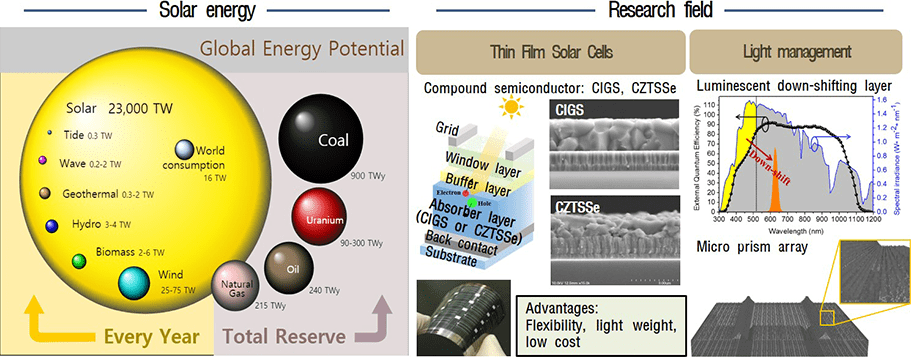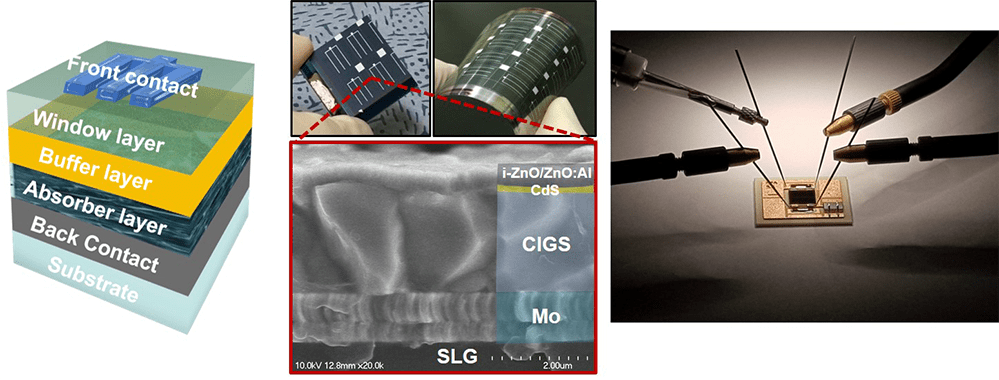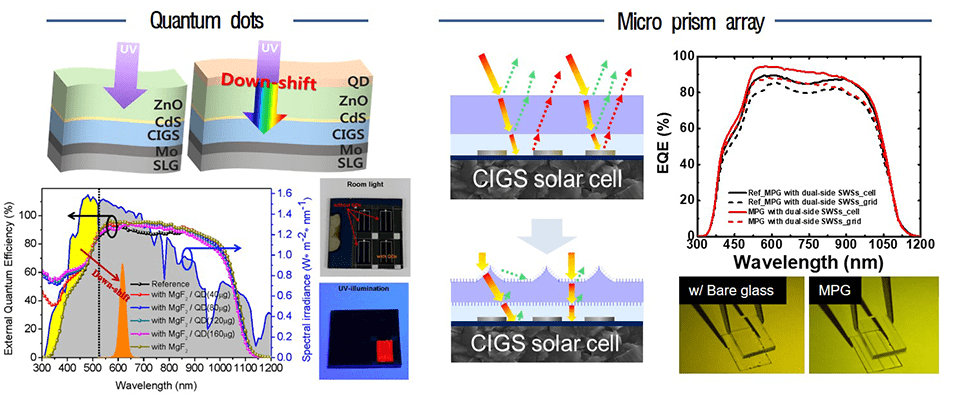Since the Industrial Revolution, mankind has been using fossil fuels, such as petroleum and coal, to make progress in development and to live the present good life.
However, due to excessive energy consumption, there are serious problems such as temperature rise due to greenhouse effect, environmental pollution,
depletion of fossil fuel. As a solution to this problem, renewable energy using wind power, tidal power, and solar power is attracting attention,
and among these, solar energy has the energy of 1,400 times the energy consumption of the world, and the research is proceeding most actively.
Until now, Si-based solar cells have been dominating the solar cell market with high efficiency and stability. However,
it is too thick to be heavy and has low flexibility, so it is limited in applications such as portable solar cells and automobile solar cells.
The MIDAS group is studying various light management to maximize the energy conversion efficiency of CIGS, CZTSSe thin film solar cell with flexible,
light and low cost high quality.

Thin-film solar cells are second-generation solar cells, which are lighter in weight than conventional Si-based solar cells, have flexibility,
and are relatively inexpensive to manufacture. In MIDAS group, we are studying compound semiconductors Cu(In,Ga)Se2 (CIGS)
and Cu2ZnSn(S,Se)4 (CZTSSe) as absorption layers of thin film solar cells. In the beginning, researches were conducted to fabricate optimal thin film solar cells
by controlling various conditions for growing CIGS and CZTSSe and characteristics of each layer.
CIGS achieved a photoelectric conversion efficiency of 19.5% and CZTSSe achieved a photoelectric conversion efficiency of 7.2%.
We are currently studying flexible CIGS thin film solar cells using flexible stainless steel substrates rather than rigid glass substrates
.
Flexible CIGS thin film solar cells can be applied to vehicles, airplanes, drones, portable chargers and so on, because they are very light. Recently,
they have attracted much attention in the field of building integrated photovoltaic module (BIPV).

Based on the technology of manufacturing high quality CIGS thin film solar cell, the MIDAS group is studying application of luminescent down shifting layer
and micro prism array which minimizes optical loss in order to maximize its photoelectric conversion efficiency.
Through this, the photoelectric conversion efficiency was increased by absorbing all the short wavelength band which was not absorbed
by the CIGS thin film solar cell or minimizing the return loss caused by the front electrode of the uppermost layer. In addition,
we are studying the technology applied to flexible CIGS thin film solar cell or GaAs based triple junction solar cell module.
